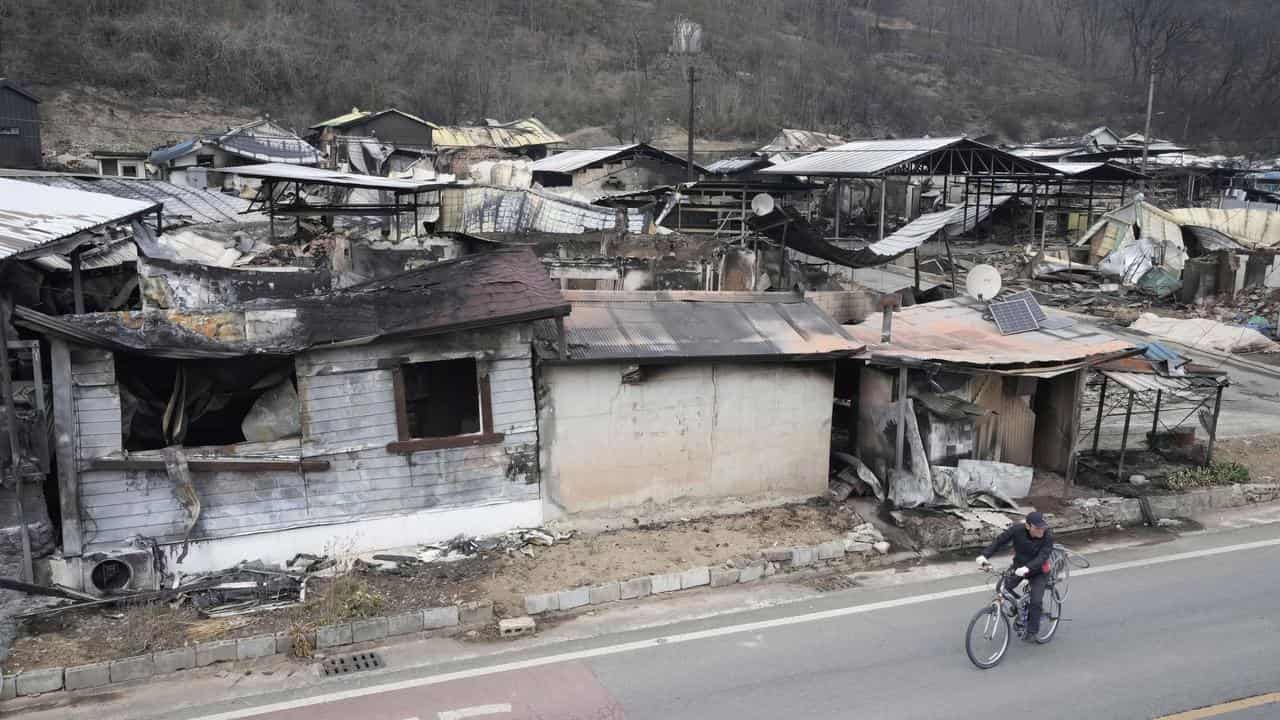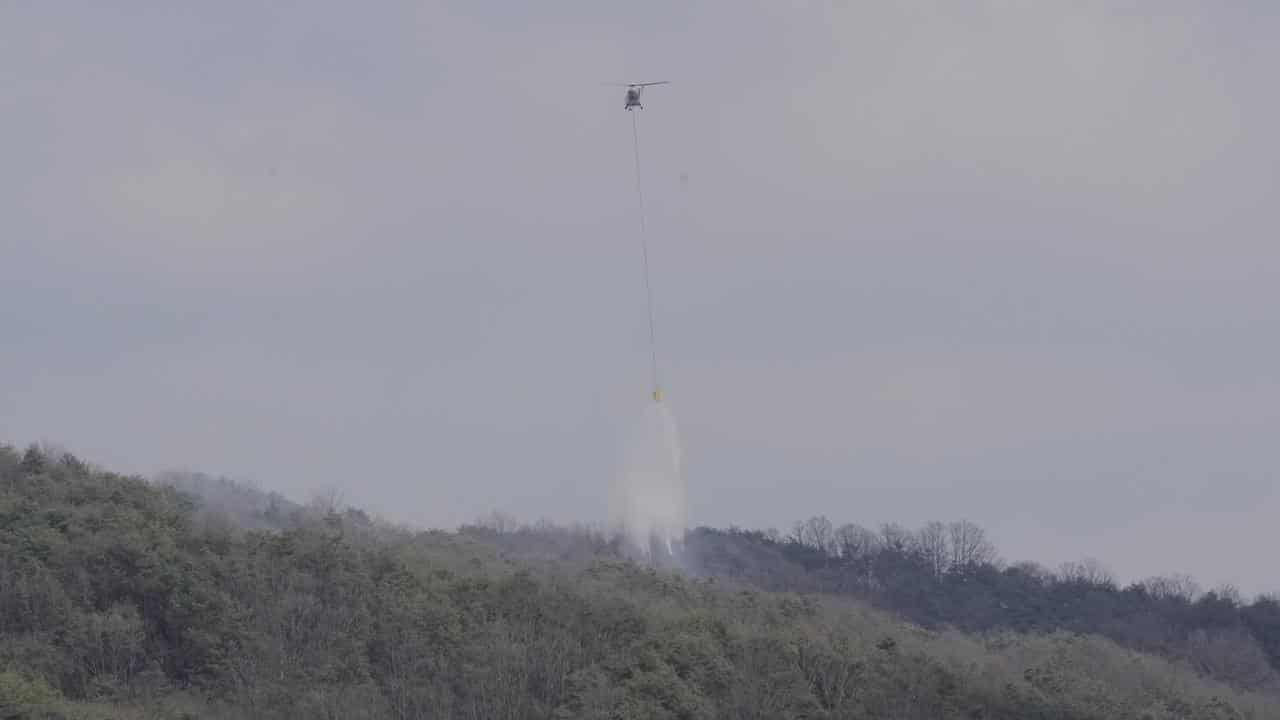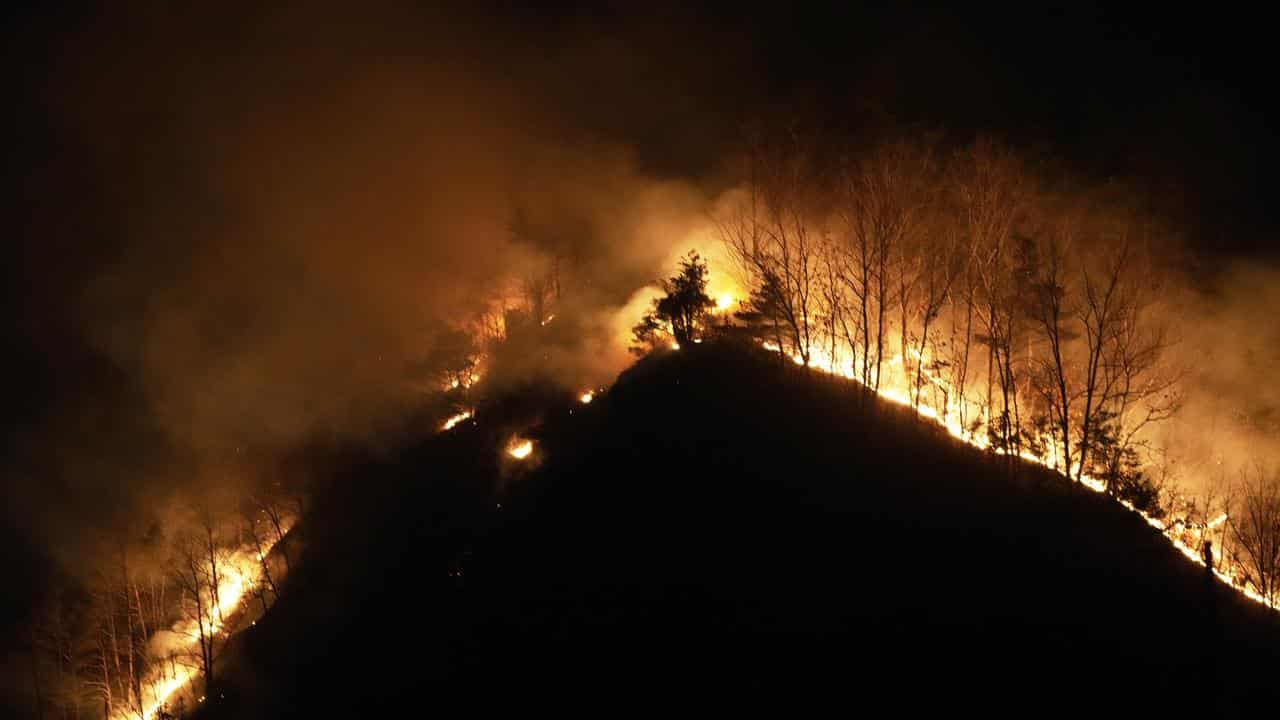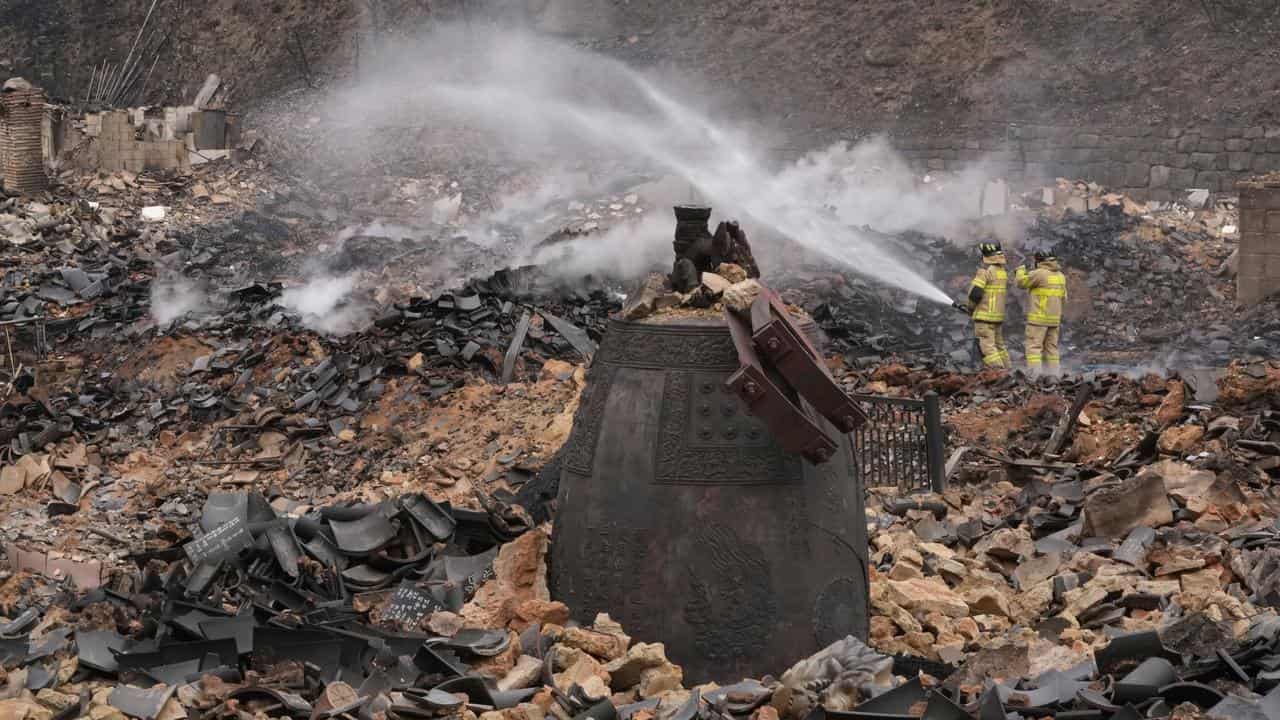
South Korean authorities have contained the main blazes in the country's largest forest fire on record, a minister says, as rain and better weather allowed more helicopters to fly and dump water, dousing the flames.
Spread by strong winds in bone-dry conditions, the wildfires have killed at least 28 people and charred more than 450 square kilometres in the southeastern region.
The main fires in five regions were under control on Friday afternoon, said Lim Sang-seop, the minister of the Korea Forest Service.

"The main fires have been contained, so we will switch to containing small ones," Lim told a briefing, thanking those who battled the fires.
The wildfires in North Gyeongsang province began in Uiseong county before spreading 70km east, to devastate an area equivalent to about two-thirds of the island of Singapore and much larger than the Los Angeles fires in January.
"Strong, dry winds blew from the west. The wind had the biggest impact," said Lim, adding that smoke and fog reduced visibility this week, presenting a bigger challenge to helicopters seeking to douse the flames.
More than 80 helicopters started flying at daybreak on Friday to dump water, the safety ministry said.

South Korea relies on helicopters to fight forest fires because of its mountainous terrain.
A helicopter pilot died on Wednesday after crashing while trying to tackle a blaze.
Experts have said the spread of the Uiseong fire was extremely unusual in terms of scale and speed, while climate change is expected to make wildfires more frequent and deadly globally.
The wildfires have displaced more than 30,000 people, many of them elderly, as is typical in rural areas across fast-ageing South Korea.

The flames consumed everything in their path, from historic temples to homes, in mountainous North Gyeongsang.
As he surveyed his burnt-out home and farm, 72-year-old Choi Jong-chan struggled to decide on his next steps.
"I have to buy everything from scratch," the farmer said.
"After 10, 20, 50 years of collecting things, the fire has burned it all down."
The US State Department offered condolences for the loss of lives and damage and said the US military was ready to help, adding that South Korea had provided unwavering support in tackling wildfires in Los Angeles and Hawaii.




